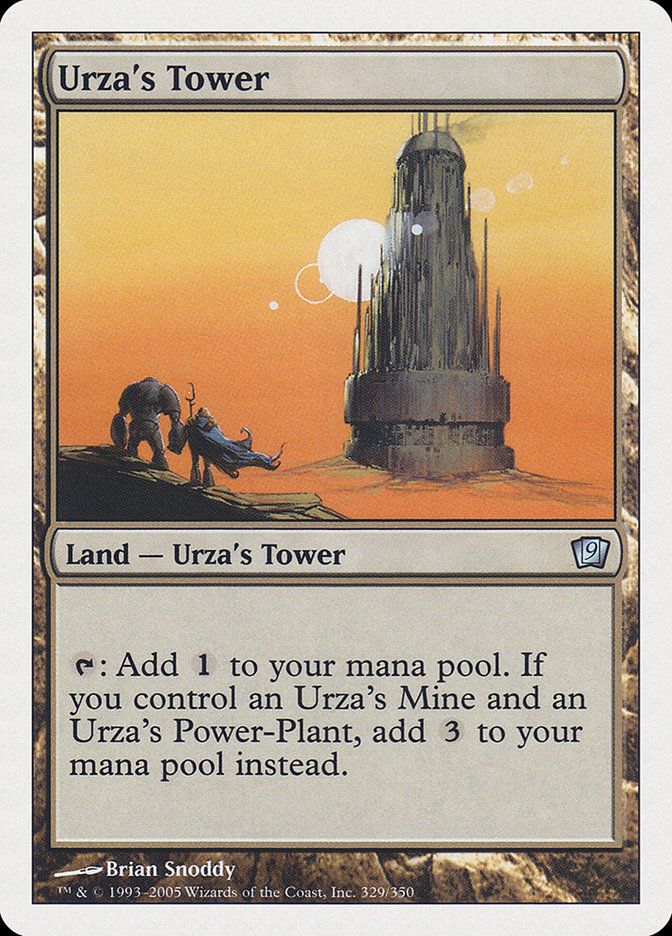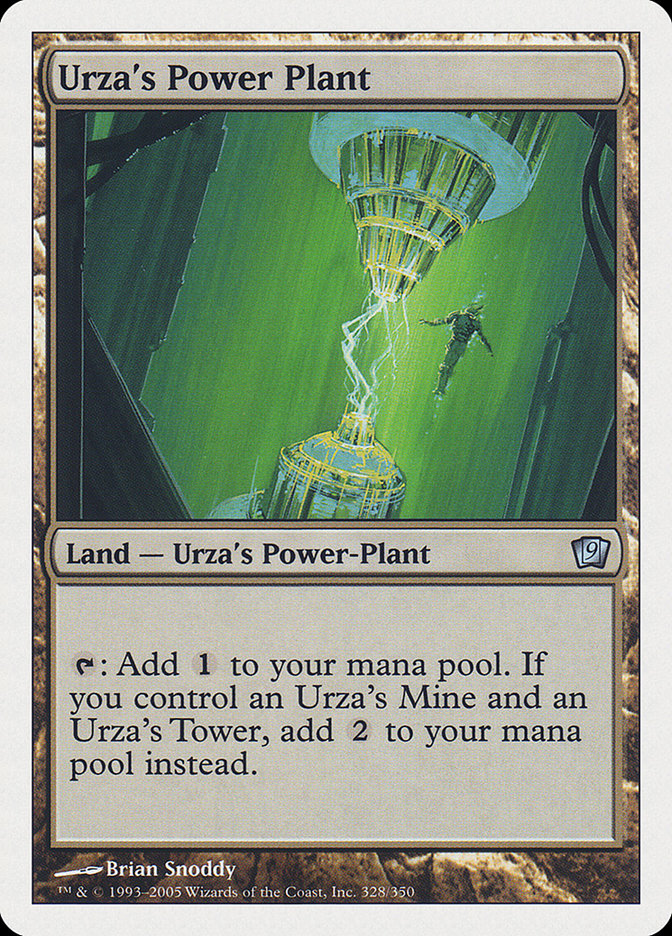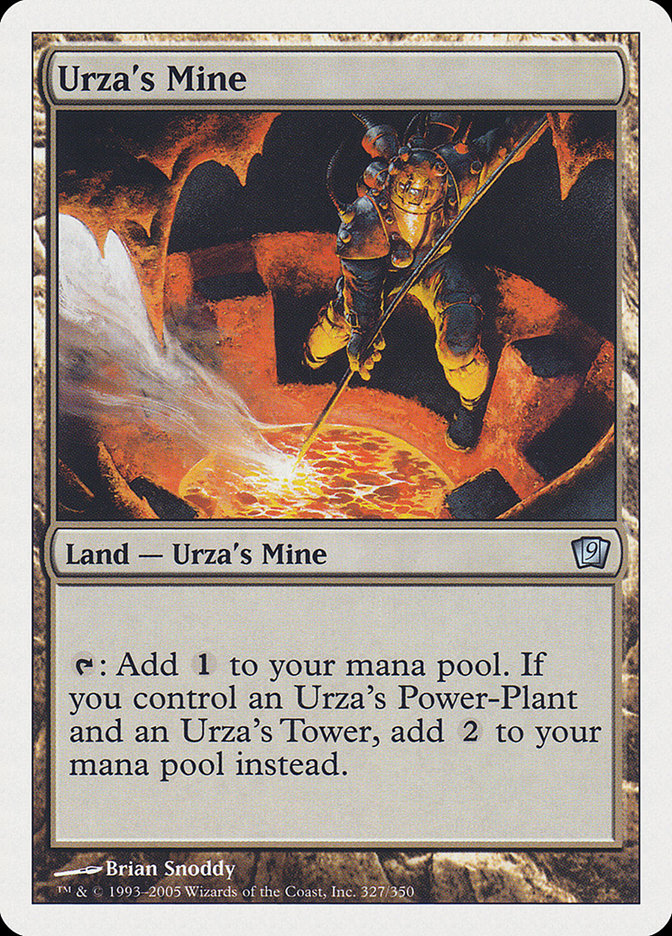I’ve written a lot recently about the unintuitive nature of Tron in the
Modern metagame. It’s a deck that is very good, but uniquely loathed within
the community that players are unwilling to pick it up when it’s
well-positioned. To read more about that phenomenon, see this article.
But here’s the thing. After a June that saw Tron perform well at several
events, I thought the period of denial was over. After weeks of expecting
Tron to emerge once again as a deck to beat and being disappointed, my
long-awaited prophecy finally unfolded, shattering the mental wall that so
many players erect to keep themselves from giving in to their inner demons
and registering Urza’s Power Plant.
Creatures (8)
Planeswalkers (6)
Lands (19)
Spells (27)

My expectation was that we would move into an era where Tron was a
consistent player in the metagame, counteracting the increased presence of
control decks that rose to combat Humans. We even saw the next step in
metagame evolution occur with the success of Infect, which in my mind
solidified Tron as a deck to stay.
So imagine my surprise when I woke up last Sunday, turned on the coverage
of the Team Constructed Open in Worcester, and saw a day 2 metagame with
exactly zero Tron decks. No Mono-Green Tron, no Eldrazi Tron, not even
Mono-Blue Tron. Did the control decks that Tron preys on not show up last
weekend? Nope, Jeskai was tied for the most played deck in day 2 with five
copies while U/W Control was tied for third with three copies. Together
those decks represented about a third of the day 2 metagame in Modern.
And the Humans decks that these control decks were built to combat didn’t
even show up. Humans has been on the decline for a while now because the
metagame has completely adapted to it, with heavy removal decks becoming
more popular and good matchups for the deck finding a tenable plan or
leaving the metagame entirely. Typically, one deck starts to decline
because too many predators enter the environment, the deck’s main predators
also decline, but Jeskai appears immune to this effect because its natural
predator, Tron, has been shadowbanned.
Why doesn’t anyone like us?
I get it. No one likes Tron. But this is getting ridiculous. You know what
I care about more than how people respond to my deck choice? Winning
matches of Magic. And Tron sure is good at that.
“But Ross, this was a team tournament. You can’t take the results of any
individual format too seriously.”
You’re right. This was a team tournament so there are more variables that
affect performance than just one individual deck. And yes, that makes
analyzing the results of one format harder to do. But I refuse to admit
that the results of these tournaments are meaningless. We just must work
harder to generate meaningful analysis because we have to separate an
individual’s performance from those of their teammates.
For those of you who follow professional sports closely, this may seem
familiar. It’s the task of statisticians who dared to look deeper than
traditional box scores. Early progenitors of analytics were decried by
entrenched members of their community for trying to play a human game on
paper, but history has shown that a deeper analysis is possible, and now
every major sports team in the world utilizes analytics in some way.
This isn’t an introduction to an article introducing Moneyball for Magic:
the Gathering, since that’s well above my capability, but I do think
there’s something to be gleaned from team events, and after some thought,
here’s what I’ve found.
The lack of Tron in Worcester made me curious about the results of past
team Opens, so I went back and checked the day 2 metagames of each one this
year. Worcester was the sixth such tournament, yielding a total of 175
teams among the day 2 fields. How many of them had a Tron player in their
Modern seat?
…
…
3.
That’s 0.17% of all day 2 teams. And two of those came at the Team
Constructed Open in Dallas, which was the smallest in total size, and the
only one where eighteen match points was enough to make day 2, leading to
the largest day 2 field of the six tournaments at 42 teams. Tron has been
less represented in day 2 of Team Constructed Opens than Bant Company and
Titan Shift.
The results of individual tournaments suffer from being too small a sample
size from which to make strong conclusions, Team Constructed events even
more so, but once we start looking at several events together, we get to a
relevant sample size.
So it appears as if Tron is chronically underrepresented late in Team
Constructed Opens, and I believe the reason why is related to how team
tournaments select more strongly for the top players than individual
events.
It’s typical for stronger players to want to team with other strong players
to maximize their collective edge over the opposition. And as we’ve seen,
the structure of team events means that these teams have a significant edge
and consistently do well in the tournament. If each player on a given team
is a 2/3 favorite to win their individual match, then the team is 20/27=74%
to win the overall match.
Team Constructed Opens consistently yield star-studded top 8s with plenty
of name players and great matches, which is part of what makes them
appealing from a coverage standpoint. But that increased edge for better
players also narrows the expected metagame at the top tables as the
tournament plays out.
One of the oversimplifications we make when discussing metagames in Magic
is to assume that the metagame remains roughly static from the beginning of
the tournament to the end, except for poorly-tuned rogue brews that fall
out early. We expect more of the established decks as the event goes on,
but rarely do we discuss how the proportions of these decks may change over
the course of a tournament.
In general, the decks that are most favored to make the top 8 are those
that are most represented and their predators. These form the rock and
paper of the metagame. But the rock decks continuously lose metagame share,
that is the share of the players still in contention to top 8 as the event
goes on, often slipping into top 8 on shear volume rather than on the
merits of its metagame position. Conversely, paper decks rise in metagame
share as the event goes on, leaving a starting metagame that was more
rock-heavy and a top 8 metagame that is likely to be paper-heavy. Thus,
it’s the next level of decks, the scissors, that often take down the trophy
because all it takes is one person to sneak through the swiss with some
positive variance and then they find a metagame that is very favorable.
This dynamic, in a much more complex way, plays out at nearly every Magic
tournament. The variance of an individual match can change who makes top 8
or gets the trophy, but it’s clear to those watching which decks were best
positioned early and late in the tournament. Still, it’s rare to see
players take these dynamics into account when thinking about the metagame,
though many successful players do so, if only on a subconscious level.
Team Constructed tournaments throw another variable into the mix, allowing
a player’s teammates to carry them through a rough matchup or two,
especially early in the tournament, thus hampering the natural culling of
the worse positioned decks in the metagame. And because stronger players
are generally playing with stronger teammates, it’s those players that are
more likely to be carried in the early stages of the tournament.
The end result is that the day 2 of team events is biased towards the decks
that the top players are playing. Just look at the top 8 from Worcester.
Frank Skarren and the brothers Jessup are all highly accomplished, and
Frank played the Modern deck he has the most experience with in Affinity.
The most decorated team in the event, Noah Walker/Mike Sigrist/Dylan
Donegan, had Sigrist in the Modern seat with Hollow One, a deck he’s played
for months.
And Ben Nikolich showed up with Team Lotus Box and he’s playing the same
mismatched foil Jeskai deck he always plays.
Creatures (4)
Planeswalkers (3)
Lands (22)
Spells (33)

Aside!
Why does it seem like every Jeskai player in Modern has an all foil deck?
Did Nikolich send out a memo to the Jeskai Facebook group or something?
Foil cards are an abomination and should be banned from tournament play, so
I need to know if there’s a specific person I can blame for this most
unfortunate development. For now, I’m blaming Ben. Shame on you.
Understanding that the best players in the event are even more likely to do
well than normal gives us a better lens through which to judge the results
of team events and metagame for them in the future.
Right now, among the top players on the SCG Tour, control decks are
overrepresented and big mana decks are underrepresented. Top players aren’t
robots that can play every single deck and make every decision with perfect
rationality. They have biases and we’re seeing those biases make a
significant impact on how these tournaments play out.
This metagame skew has consistently played out in Team Constructed Opens
this year and I expect it to continue in the future. Who is going to pick
up Tron? Jim Davis was on the deck for much of last year, but has returned
to his beloved control, picking up Jeskai this year and I don’t see him
getting off blue cards when they are playable.
Joe Lossett used to play Tron, but as the SCG Tour moved away from the West
Coast in recent years we’ve seen him on the circuit less and less. If none
of the top teams are going to play Tron, its odds of success are
dramatically lower.
Honestly, I wonder if Zan Syed understood this when he made his selection
of Bant Spirits for last weekend:
Creatures (30)
- 1 Birds of Paradise
- 4 Noble Hierarch
- 2 Phantasmal Image
- 4 Drogskol Captain
- 4 Rattlechains
- 4 Spell Queller
- 3 Selfless Spirit
- 4 Mausoleum Wanderer
- 4 Supreme Phantom
Lands (22)
Spells (8)

Zan was coming off an Open win with Infect, a deck that is well-positioned
in a Modern field that is moving towards Tron as a means of combating
Jeskai Control. He found himself in a great top 8 with several big mana
decks and Ironworks to prey on, and few decks with lots of spot removal.
It’s exceedingly rare for a player to switch decks after winning a trophy,
even if they expect a significant metagame shift, but Zan’s choice of Bant
Spirits for Worcester was much better than Infect would’ve been as it preys
on Jeskai Control with its many flash threats and ability to blank spot
removal.
It’s certainly possible that Bant Spirits, with the addition of Supreme
Phantom, is just a very good deck, and you can read more about it later
this week from Todd Anderson, but it’s unquestionable that changing decks
left Zan in a much better position in the metagame.
It’s time to look at Team Constructed Opens as separate entities from
individual tournaments. The dynamics of them are quite different and create
consistently different metagames. Fortunately, this weekend we have another
Team Constructed Open in Philadelphia, and I get to put this analysis to
good use.
For all of you attending this weekend, make sure your Modern player is
aware of the team metagame being control-heavy and Tron-light. Decks like
Mardu Pyromancer and Bant Spirits will continue to be strong choices as
decks that are powerful enough to handle the variance in any Modern
tournament, but are good against control decks. If you want to hedge away
from Tron and toward control even further, the Four-Color Pyromancer deck
Brennan DeCandio played earlier this year is a strong choice:
Consequently, I’d look away from decks that are weak against control and
good against Tron. That means small creature decks like Infect and Affinity
are weaker choices than they would be in an individual tournament.
Or, if you can get over yourself, you could just play the tier one deck
that isn’t getting the respect it deserves. With his beloved Grixis Delver
taking a hit from the bans in Legacy and a recent top 8 with Tron, it may
be time for Tannon Grace to slide into the Modern seat and let me pick up
the Brainstorms for a change.




